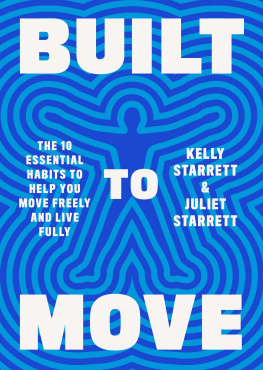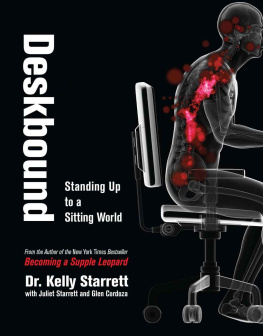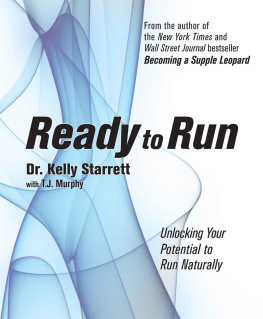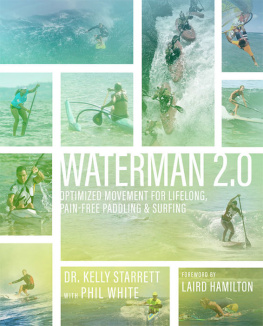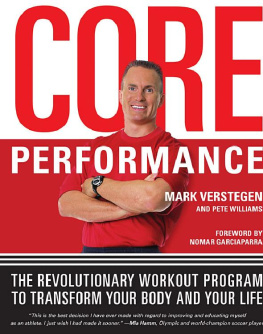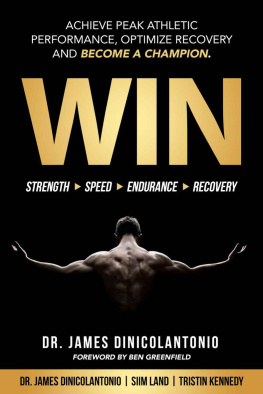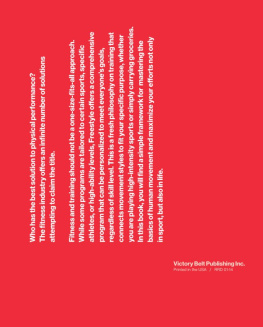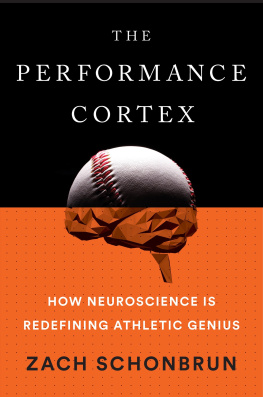CHAPTER 7
THE SYSTEMS
You need to stretch!
Youve heard it a million times before. The perplexing assertion that youre not stretching enough and that its why youre injured or sore, slow or clumsy. Think of your first coach admonishing you to stretch after practice, or your gym teacher preaching about the importance of stretching. Oh, your back hurts? No problem! Just stretch your hamstrings and it will feel better. You cant get into a good squat position because your quads are tight? Just stretch them out.
Conventional wisdom tells us that if we want to optimize athletic performance, improve flexibility, prevent muscle soreness, and reduce potential for injury, we have to stretch. For a long time, stretching has been a catchall modality for dealing with soreness and pain, for rangeof-motion restrictions, and for joint troubles. Just keep stretching. But heres the problem: Stretching doesnt work by itself. It doesnt improve position, it doesnt improve performance, it doesnt make you faster, it doesnt eliminate pain, and it doesnt prevent injury. Thats why when you dutifully complied with your coachs order to stretch after class, you didnt become a better athlete or all of a sudden stop getting injured.
Let me clarify: When I say, stretching, Im referring specifically to end-range static stretching, or hanging out in an end-range static position with zero intention. Im talking about purposeless stretching. Consider the classic hamstring stretch: You lie on your back, grab your ankle, pull your hamstring to end-range, and then hang out while you dreamily watch the geese overhead flying south for winter. This type of stretching can theoretically lengthen your hamstring, but doesnt tell youor your coachanything about your motor-control or your ability to get into good positions. In other words, taking your hamstring to endrange and keeping it there is not going to help you run faster or change your capacity to deadlift more weight. Yet when most people have a tissue or joint restriction that prevents them from getting into a good position, they think, Man, I suck! I need to stretch.
An example by way of analogy: If you pull on each end of a T-shirt, what happens after a minute or so? It becomes all stretched out, right? What do you think happens when you take your beautiful tissues to endrange and keep them there? They get all stretched out like your pitiful Tshirt. Imagine lengthening your hamstrings and then sprinting down a field or attempting a max-effort deadlift without developing the strength or motor-control to handle that new position. You might as well get down on your knees and beg to be injured. Lengthening your muscle is not a bad thing if you have the motor-control to support that end-range position and you are expressing those end-range positions with load-bearing, full-range exercises. This is why we deadlift, squat, and practice fullrange functional movements in the gym.
The issue is not that static stretching lengthens the muscle. The issue is that it addresses (albeit poorly) only one aspect of your physiologic systemyour muscle. It doesnt address motor-control, or the position of your joints, or whats going on at the joints. It doesnt address sliding-surface functionthat critical interplay of how your skin, nerves, and musculature react with one another. Any of these things could look like tight musculature. And thats why stretching it has been the good, old-fashioned Band-Aid we have always applied. And if stretching muscles works so well, why do we still see as much dysfunction and pain as we do?
If stretching is not the answer, what is? In short, we need to systematically deal with each of the problems that prevent us from getting into the ideal positions and keep us from moving correctly. Thats what Im going to cover in this chapter. I want to show you a system for addressing all of the components that limit position and challenge movement efficiency. This way, youll be able to solve your particular problem(s) and see measurable improvement.
This passage from Supertraining, by Yuri Verkhoshansky and Mel Siff, helps put this idea into perspective:
the nature of flexibility generally is not adequately appreciated. Flexibility, whatever people mean by that term, differs from joint to joint, displays different properties during dynamic versus static condition, and concerns not only muscles but all components of the muscle skeletal system, as well as the various types of stretch reflex in the neuromuscular control circuits of the body.
Of course, few people think in terms of body systems because the just stretch it paradigm remains so prevalent. Its time to move beyond this simplistic outmoded notion of flexibility and start thinking about the aspects that impede position and how position relates to performance. To help people make this transition, I have deleted the words stretching and flexibility from my vocabulary and replaced them with movement and mobilityor mobilization.
I define mobilization as a movement-based, integrated, full body approach which takes into account all of the elements that limit movement and performance. These include short and tight muscles, soft tissue and joint capsular restriction, motor-control problems, joint range-of-motion dysfunction, and neural dynamic issues. In short, mobilization is a tool to improve your capacity to move and perform efficiently.
This perspective gives me a clean slate from which to talk about the problems with movement restrictions in a more holistic way. The idea is to get you to stop thinking that stretching is important. Are you truly ready for this? Stretching is not important. Position and the application of position through movement is what matters most. If you cant get into a good position because youre limited or you have a tissue restriction of some kind, stretching alone wont give you the results you want. What will give you results is a system that helps you to figure out which of the variables are compromising your ability to move correctly, and then, once youve diagnosed the problems, effective modalities or techniques to resolve each of them.
A Movement-Based Approach
Theres no one-size-fits-all modality when it comes to range-of motion-restrictions or tight muscles. In fact, its best to combine techniques as often as possible and take a systematic approach so that we can address all positional and movement-related problems, soft tissue stiffness, and joint restrictions.
Its like this: A chiropractor, orthopedist, osteopath, or a joint-nutty physiotherapist cannot solve all the issues in your tissues and joints. Neither can a massage therapist or other body worker. A strength-andconditioning coach might be a genius when it comes to teaching perfect movement, but that is only one variable in the equation. Does this mean you shouldnt work with a coach, consult a doctor, or get a massage? Absolutely not. You should seek the expertise of professionals in various fields so that you know which modality works for you.
I find that few people have a model for performing basic maintenance on their body. When someone comes to me for treatment, for example, Ill always ask, What have you done to alleviate the problem? And nine times out of ten he or she will shrug and admit, Nothing.
People need a go-to safe plan so that they can take responsibility for their own dysfunctions. And that safe plan starts with position and movement.
To reiterate, you should always go after positional and movement mechanics first, and treat the symptoms after. There are several reasons for this. For starters, if you can get into a good position and move with good form, mechanical inefficiencies automatically disappear, which means that a lot of potential overuse injuries are nipped in the bud. Its like curing a disease without having to treat the symptoms.


